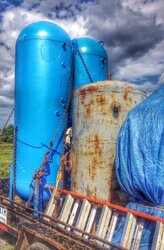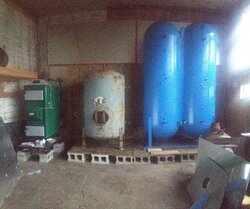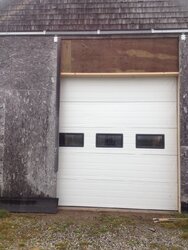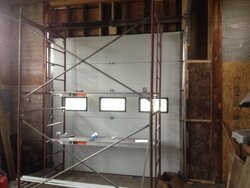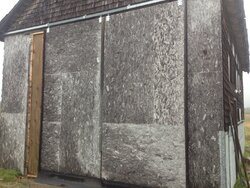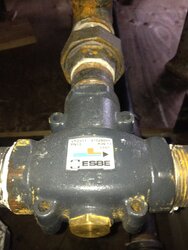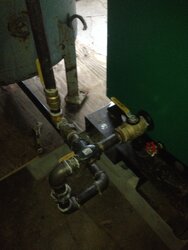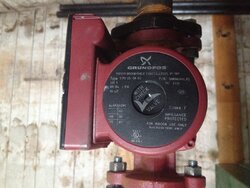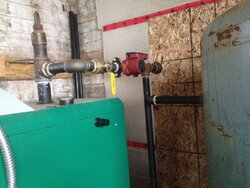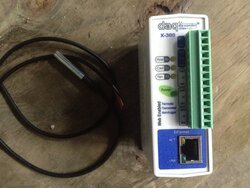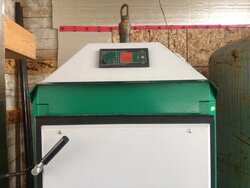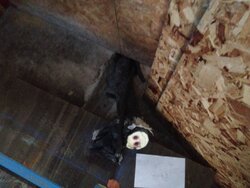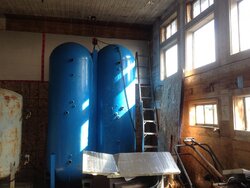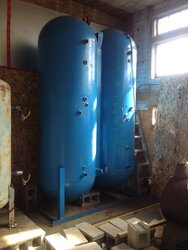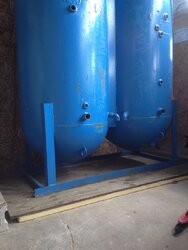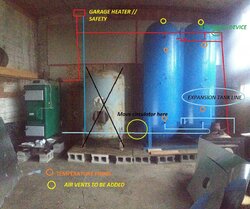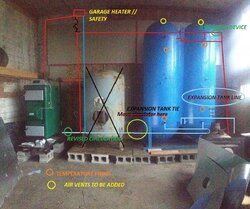Here is my Eko project installation.. Given that I am not a professional in any parts of the installation, I've gone through a lot of mistakes! Anyhow, here it is so far...
Trench
I dug a 110 feet trench from the basement of my house up to the back of the garage. I initially wanted to have the pipe 4 feet deep (6 feet in the driveway) but that plan changed along the way. At first, I planned on installing a weeping tile under the pipe but once realizing I had no place to bring the water, I had to scratch that idea.
All in all, I'm about 2 feet deep where there is no traffic and about 4 feet deep in the driveway. I have pure stone under and above the pipe. The pipe is also covered in sand to protect from rock perforation. Along with the pipe, I also included the electrical cable from the garage to the house to connect the boiler on the backup power's electrical panel. I also included two 3/4 inch water pipes for phone and data lines.
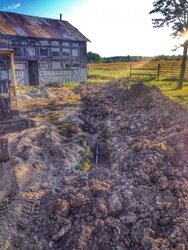
Trench
I dug a 110 feet trench from the basement of my house up to the back of the garage. I initially wanted to have the pipe 4 feet deep (6 feet in the driveway) but that plan changed along the way. At first, I planned on installing a weeping tile under the pipe but once realizing I had no place to bring the water, I had to scratch that idea.
All in all, I'm about 2 feet deep where there is no traffic and about 4 feet deep in the driveway. I have pure stone under and above the pipe. The pipe is also covered in sand to protect from rock perforation. Along with the pipe, I also included the electrical cable from the garage to the house to connect the boiler on the backup power's electrical panel. I also included two 3/4 inch water pipes for phone and data lines.

Last edited:


